2017 Subaru Outback 2.5i Touring Review: The Charm Wagon
- Subaru's AWD delivers
- Engine balances power with decent economy
- Plentiful and usable interior space
- Sober design borders on boring
- Cabin is dark
- Driver-assistance tech easily defeated by bad weather
Is the 2017 Subaru Outback a crossover, an SUV, or – heaven forfend – a wagon? The jacked-up, load-toting version of the Legacy station wagon, the Outback may be hard to pigeon-hole but that hasn't stopped it selling. Indeed, you could well find yourself questioning the crossover craze by the end of your drive.
On paper, the Outback finds itself up against midsize crossovers like Ford's Edge. In reality, it's generally shorter in height than those SUV-lite rivals, but ironically has greater ground clearance. Its looks err on the staid side, though many of the sharper edges were smoothed in this fifth generation.
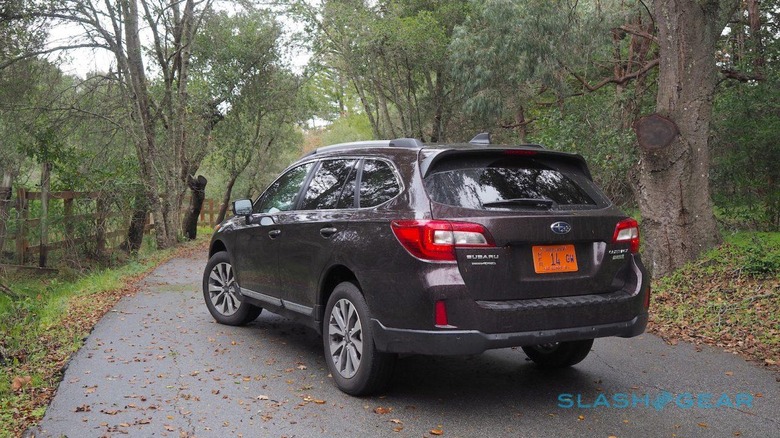
For the 2017 model year, Subaru makes some more aesthetic tweaks, and the result is a handsome – if still fairly sober – station wagon. A silver surround to the front grille tries valiantly to give the car some visual glitz, echoed by daytime running lights that leave the Outback looking like a snorting bull. A little more chrome appears on the sides, but Subaru's enthusiasm for it clearly ran out by the time the designers reached the rear hatch.
No matter: the Outback has practicality on its side. A power liftgate is standard on all but the entry-level car, with the ability to adjust its opening height to suit your garage. Roof rails come as standard, and they're easier to load than on the typical crossover thanks to the car's lower stance.
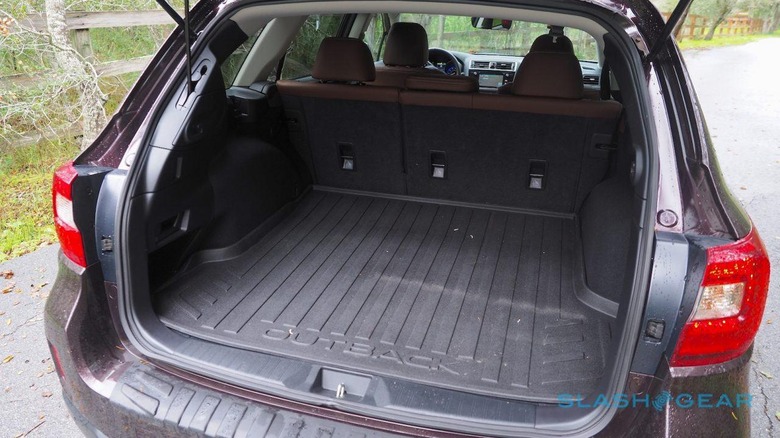
Subaru offers two engines with the 2017 Outback, a 2.5-liter four-cylinder good for 175 horsepower and 174 lb-ft. of torque, or a 3.6-liter six-cylinder which kicks things up to 256 horsepower and 247 lb-ft. Unusually, the latter is a flat-six, not the more common V6. Both get paired with a continuously variable transmission (CVT) that can feign six real gears if you get handy with the steering wheel paddles. The vast majority of the time, though, it's easier to let the Outback shimmy through its belts itself.
On-road manners lean toward the placid. The CVT prefers to keep the engine from spinning too frantically, while the Outback's not-inconsiderable curb weight dissuades any attempt to hustle the standard-fit AWD system as you might in the WRX. There's some body roll in corners but reliable grip.
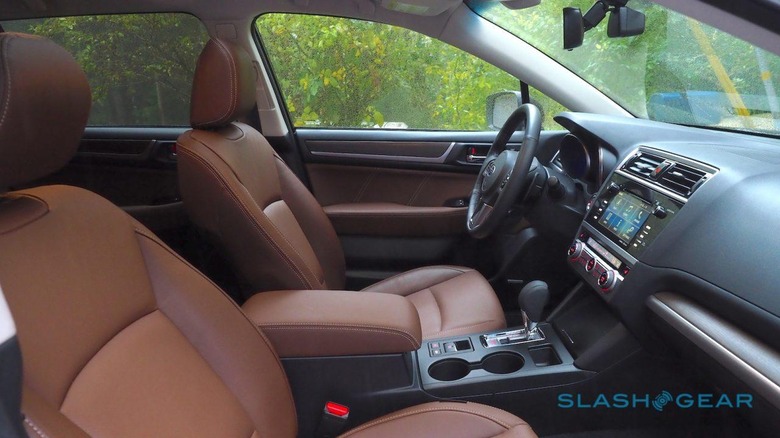
At times, Subaru almost seems to be challenging you to dislike the Outback. The Brilliant Brown paint, exclusively available on Touring trim cars, floats in an odd space between forest green and sick-river brown. Looming at the top of the windshield is Subaru's EyeSight driver-assist array, a bulky collection of stereo cameras and other sensors that was oddly prone to being defeated by a splash of Bay Area rain. The warning message that front collision protection wouldn't be weighing in popped up a few too many times for comfort.
And yet, there's an awkward charm to the Outback that wins you over. Despite the uninspiring plastics on the dashboard, everything works with an honesty that doesn't leave you hunting for buttons or digging through menus. The odd exception is the lack of a media shortcut: if you switch over to the map on the 7-inch touchscreen, you have to jump back to the main menu and then tap through to get to whatever audio is playing. Pleasingly, the tech is standard on the Touring trim, which comes in at $35,995 plus $875 destination.
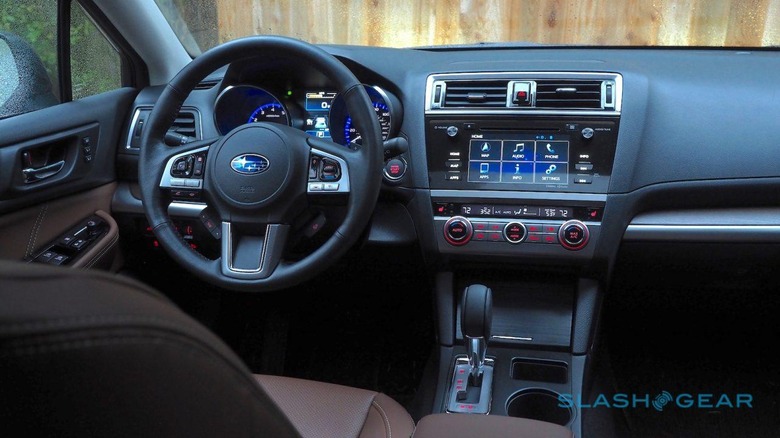
Space in both the front and the rear is excellent, and the trunk is both capacious – 36 cubic feet normally, but more than doubling when the rear seats are down – and readily loaded. The Outback's 8.7-inches of ground clearance is better than many crossovers or midsize SUVs manage. At freeway cruising speeds the cabin is a hushed and pleasant place to be, with plenty of both storage cubbies and, courtesy of the expansive glazing, natural light.
According to the EPA, the 2017 Outback should do 25 mpg in the city, 32 mpg on the highway, and 28 mpg combined. In my own, mixed driving I saw 27 mpg. That's comfortably higher than what you'd see from the Edge AWD, and slightly better than what Honda's CR-V AWD will on paper.
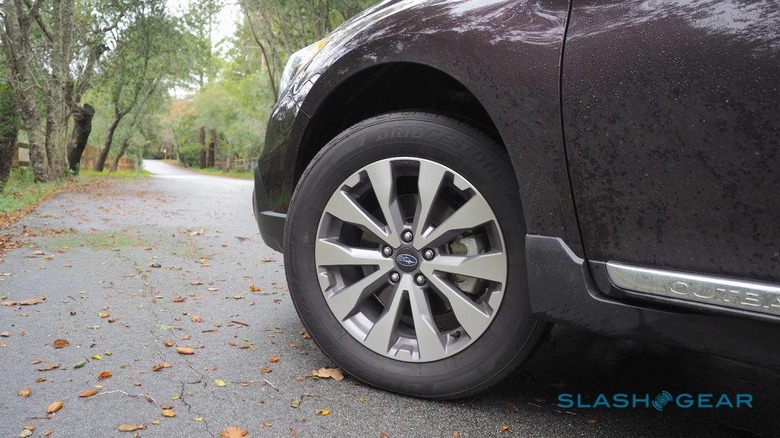
The Honda cossets a little better, and has more plentiful – not to mention more user-friendly – technology. The Subaru lacks Apple CarPlay and Android Auto, for instance, while the CR-V can be had with both. Conversely, though, the Outback's space is more usable.
NOW READ: 2017 Subaru Forester 2.5i Premium Review
Not for nothing are Subaru owners so enthusiastic and loyal to their cars. The company's line-up may span a broad gamut – from Outback at one extreme, to fire-breathing WRX STI at the other – but one thing is consistent: drivers simply love them. Spend some time at the wheel and it's not hard to see why: the 2017 Outback wears its honesty on its sleeve and, crossover or wagon or whatever it is, is a better car for it.
